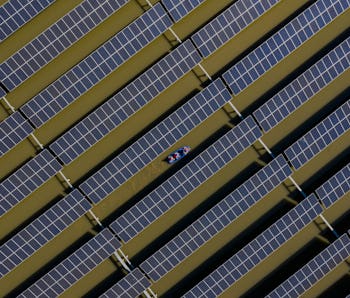Tech
Human hair could help create better solar panels
Carbon dots created from human hair are capable of protecting solar panels from moisture and other damaging environmental factors.

A material called a carbon dot can be derived from human hair and used to improve the performance of solar panels. Researchers at the Queensland University of Technology in Australia (QUT) recently published a study showing how the material can form a layer around perovskites crystals that make up perovskites solar panels.
The hair waste used in the study was sourced from a barbershop in Brisbane.
Making better solar panels — Perovskites solar cells are a relatively new technology that has the potential to deliver low-cost solar electricity. They are created with a compound that is easily manufactured, and they’re flexible so they could be placed in a variety of scenarios. They’re also very lightweight. But the technology is nascent and still needs to become cheaper and more stable before it will be widely used.
Renewable energy sources like solar have dropped in price tremendously over the years, but the need to cut greenhouse gas emissions remains as urgent as ever, and low oil prices aren’t helping. Companies like Tesla have been innovating in another part of the chain, solving the tricky issue of storing intermittent solar-generated energy for when it’s needed later.
Carbon nanodots are tiny particles of carbon that can be made by breaking down hairs and burning them at high temperatures. What the researchers found was that when they added carbon dots into the process of making perovskites crystals, the dots formed a protective layer around the crystals. “It protects the perovskite material from moisture or other environmental factors, which can cause damage to the materials,” said Professor Hongxia Wang, who led the study. The cells covered with carbon dots were found to have a higher conversion efficiency and greater stability that perovskite cells without carbon dots.
Hairy bois, unite — The biggest challenge remains making perovskite solar cells that can last 20 years or longer, and developing a process for mass production. Right now, perovskite solar cells can only be manufactured in controlled environments with very low moisture and oxygen, and only very small cells have been produced.
Once those hurdles are overcome — which could take ten years, according to researchers — the extra hairy among us could help solve the world’s energy issue.